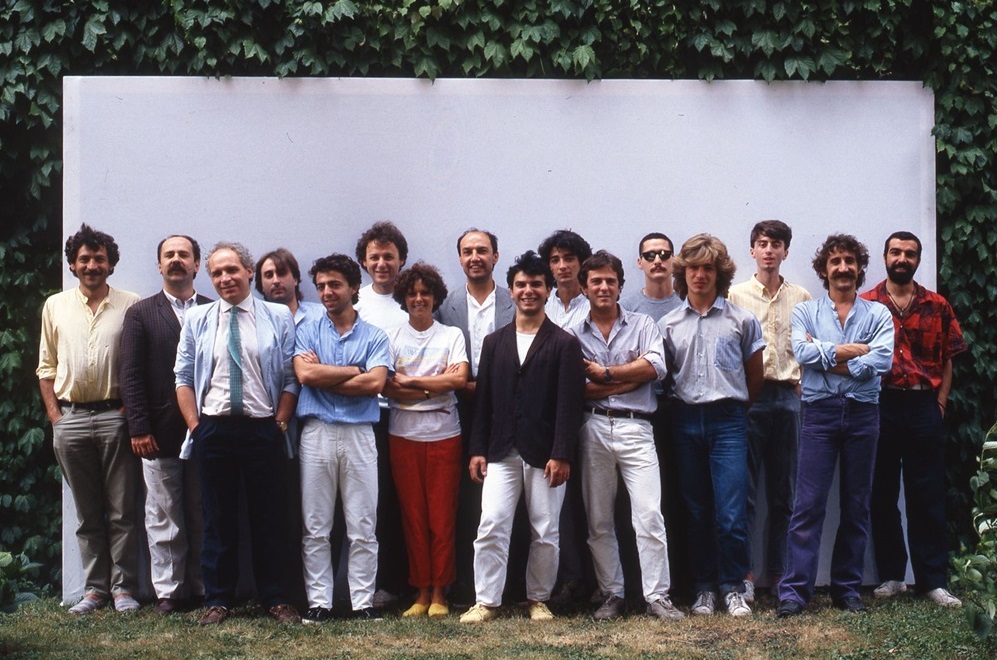Today, I want to take you on a journey into the captivating world of Studio Azzurro. Imagine, if you will, a bustling city in Italy, where amidst the cobbled streets of Milan, a unique, creative soul thrives, contained within the diverse bodies of talented individuals. This soul is Studio Azzurro, a collective that has etched its mark in the annals of artistic history, forging a path of exploration into technology and storytelling.
The identity of Studio Azzurro is as unique as the city of Milan itself. It’s a soul made up of many people who, over the years, for short or long periods, have contributed with their thoughts and sensitivities to build a unified creative atmosphere. In 1982, three visionary pioneers—Fabio Cirifino, Paolo Rosa, and Leonardo Sangiorgi—embarked on an audacious journey fueled by a genuine desire to unravel new technological languages’ poetic and expressive possibilities. Joined later by Stefano Roveda, an expert in interactive systems, Studio Azzurro blossomed into an artistic research laboratory akin to the famed Renaissance workshops of the old.
Their saga begins with creating immersive video environments, where electronic imagery melds seamlessly with physical spaces, beckoning viewers into a realm where they become integral participants in the narrative tapestry. Works like “Luci d’inganni” (1982) and “Il Nuotatore” (1984) are captivated by their evocative portrayal of human form and nature, set within spatial contexts that mirror the social fabric of their surroundings.
As the years unfold, Studio Azzurro’s creative odyssey extends to the realm of theatre, where they pioneered the concept of the double scene—a fusion of live performance and projected imagery. Productions like “Prologue to a Counterfeit Secret Diary” (1985) and “La Camera Astratta” (1987) blur the lines between reality and virtuality, captivating audiences with their dynamic interplay of human presence and virtual space.
Their artistic canvas knows no bounds as Studio Azzurro ventures into the realm of cinema, crafting a cinematic tapestry that mesmerizes audiences with its visual splendour and narrative depth. From “Festive Faces” (1980) to “The Mnemonist” (2000), each film serves as a testament to their mastery of the art of storytelling.
Studio Azzurro undergoes a metamorphosis at the dawn of the 1990s, delving into interactive environments. Works like “Tables” (1995) and “Where are all these people going?” (2000) invite participants on a journey of experiential immersion, where the narrative unfolds organically through interactive engagement.
Their explorations extend to the realm of museums, where they redefine the boundaries of narrative engagement through immersive exhibitions and museum tours. The Museo Laboratorio della Mente in Rome (2008) stands as a paradigmatic example, addressing issues of mental distress with a cognitive and experiential approach that resonates deeply with visitors.
But Studio Azzurro’s quest for narrative resonance continues. Their “Bearers of Stories” series, epitomized by works like “Sensible Map” (2008) and “Miracolo a Milano” (2016), invites participants to delve into the cultural memory of communities, forging connections with the past through participatory exploration.
And as they traverse the realms of artistic expression, Studio Azzurro remains steadfast in its commitment to reflection and introspection. Their seminal publication, “Art Outside of Itself: A Manifesto for the post-technological Age” (2011), offers incisive insights into three decades of artistic praxis, challenging conventional paradigms and envisioning new horizons of creative possibility.
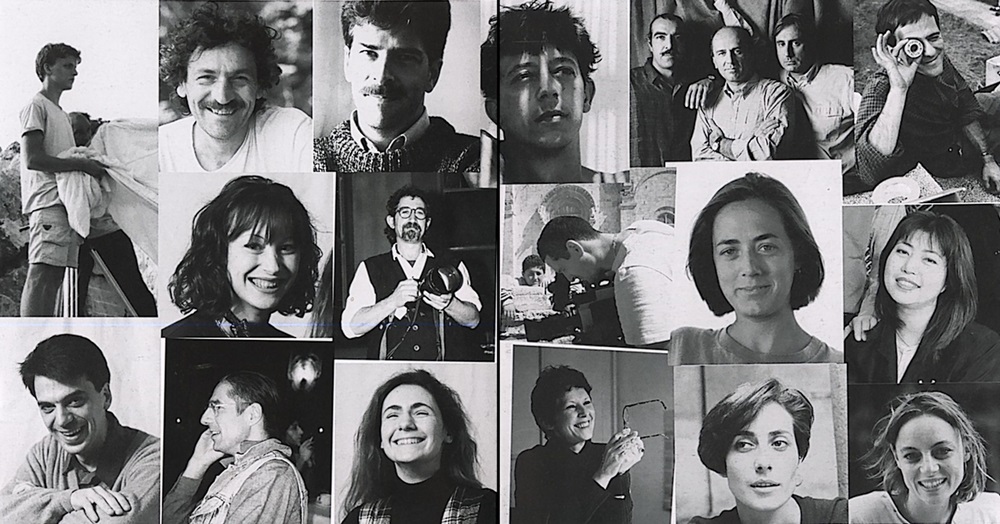 The Genesis of Studio Azzurro
The Genesis of Studio Azzurro
Studio Azzurro’s journey began with a collective vision to explore the fusion of electronic imagery with physical environments. Their pioneering spirit led to the creation of immersive video environments, captivating audiences with meticulously composed sequences of events. Works such as “Luci d’inganni” (1982) and “Il Nuotatore” (1984) exemplified this approach, dissolving the boundaries between reality and imagination.
Evolution of Artistic Exploration
As Studio Azzurro evolved, their exploration expanded to encompass theatre, introducing groundbreaking techniques such as the double scene, which merged live performance with projected imagery. Productions like “Prologue to a Counterfeit Secret Diary” (1985) and “La Camera Astratta” (1987) challenged perceptions of reality and pushed the boundaries of theatrical innovation.
Cinematic Endeavors
Simultaneously, Studio Azzurro embarked on a cinematic journey, producing visually stunning films demonstrating their storytelling prowess. From the whimsical charm of “Festive Faces” (1980) to the introspective depth of “The Mnemonist” (2000), each film served as a testament to the studio’s mastery of the cinematic medium.
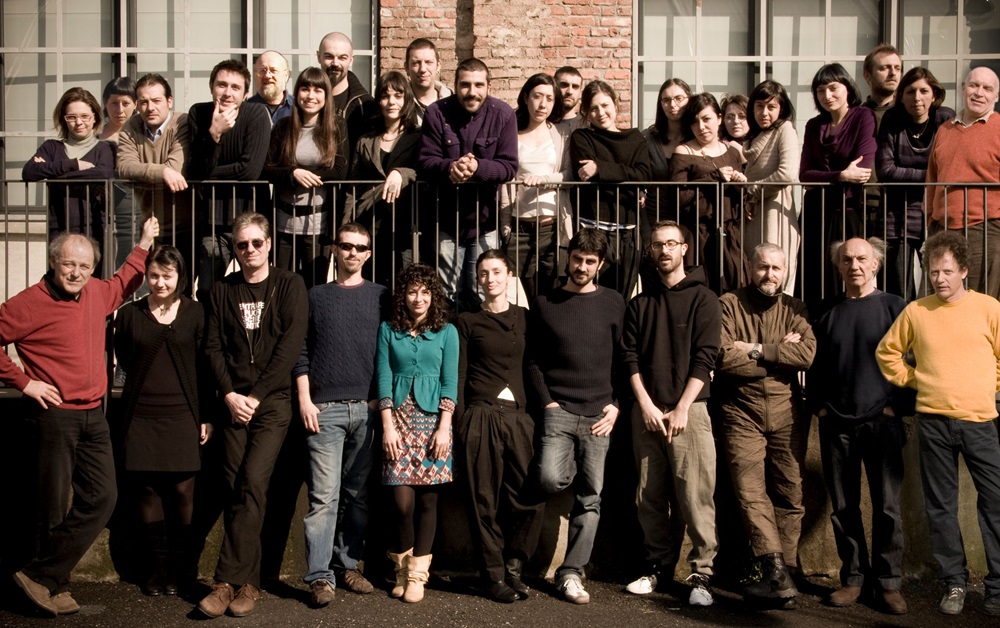 Interactive Explorations
Interactive Explorations
In the 1990s, Studio Azzurro embraced interactive technology, pioneering the creation of sensitive environments that reacted to the presence and actions of participants. Works like “Tables” (1995) and “Where Are All These People Going?” (2000) transformed viewers into active collaborators, blurring the lines between creator and audience and opening new avenues for immersive storytelling.
Cultural Engagement and Museum Narratives
Studio Azzurro’s commitment to cultural engagement extended to collaborations with museums and cultural institutions, where they crafted immersive exhibitions that engaged visitors on cognitive and experiential levels. Notable examples include the Museo Laboratorio della Mente in Rome (2008), which addressed issues of mental distress through immersive experiences.
Recent Major Works
1. TRACKS: Room on the History of Human Evolution
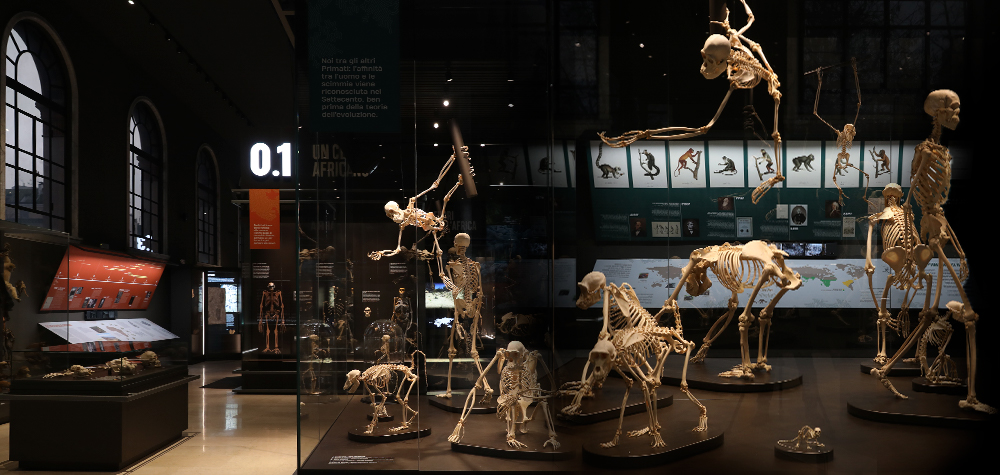 Location: Natural History Museum, Milan, 2024 Description: This immersive installation at the Natural History Museum of Milan delves into the mysterious mosaic of human evolution. Visitors are guided through multiple languages, such as photography, modelling, graphics, and sound, through three environments and four timelines, highlighting crucial moments in human evolution.
Location: Natural History Museum, Milan, 2024 Description: This immersive installation at the Natural History Museum of Milan delves into the mysterious mosaic of human evolution. Visitors are guided through multiple languages, such as photography, modelling, graphics, and sound, through three environments and four timelines, highlighting crucial moments in human evolution.
2. THE OTHER POMPEII:
 Everyday Lives in the Shadow of Vesuvius Location: Pompeii Archaeological Park, Palestra Grande, 2023 Description: Offering a unique perspective on ancient Pompeii, this exhibition explores the lives of ordinary people through multimedia settings and vivid life stories. Visitors are immersed in the daily lives of Pompeii’s inhabitants, shedding light on the silent majority hidden by history.
Everyday Lives in the Shadow of Vesuvius Location: Pompeii Archaeological Park, Palestra Grande, 2023 Description: Offering a unique perspective on ancient Pompeii, this exhibition explores the lives of ordinary people through multimedia settings and vivid life stories. Visitors are immersed in the daily lives of Pompeii’s inhabitants, shedding light on the silent majority hidden by history.
3. EPIPHANY: Incorporating the Unexpected
Location: Porta Sant’Andrea, Bergamo, 2023
 “The Epiphany Cloud” is a dynamic installation that responds to the presence of people, narrating the story of the four natural elements—AIR, FIRE, EARTH, and WATER. Visitors are captivated by unexpected scenarios that disrupt the familiar, accompanied by a collection of fairy tales written on fragments of the Cloud.
“The Epiphany Cloud” is a dynamic installation that responds to the presence of people, narrating the story of the four natural elements—AIR, FIRE, EARTH, and WATER. Visitors are captivated by unexpected scenarios that disrupt the familiar, accompanied by a collection of fairy tales written on fragments of the Cloud.
4. SHAPES AND COLORS OF PRE-ROMAN ITALY: Canosa of Puglia
Location: Santiago de Chile, 5 July – 1 October 2023
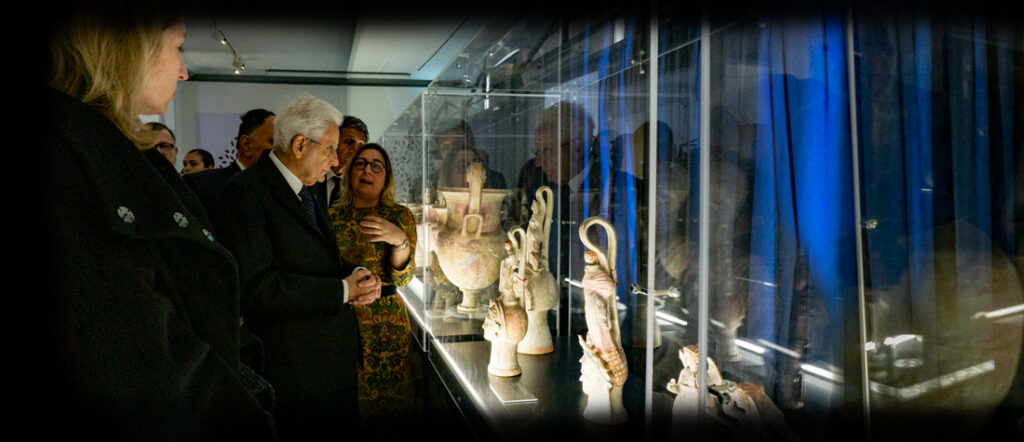 This exhibition metaphorically reconstructs a funeral procession in pre-Roman times in Canosa di Puglia through synchronized video installations. Visitors are transported to ancient rituals and customs, experiencing the rich artistic heritage of Italy’s pre-Roman era.
This exhibition metaphorically reconstructs a funeral procession in pre-Roman times in Canosa di Puglia through synchronized video installations. Visitors are transported to ancient rituals and customs, experiencing the rich artistic heritage of Italy’s pre-Roman era.
5. ENLIGHTENED: Lights of Enchantment Description: Celebrating the fortieth anniversary of “Luci di inganni,” this exhibition features new video environments designed for the Galleria Memphis Milano. Iconic lamps from the Memphis collection come to life, illuminating images and objects in a mesmerizing display of light and movement.
6. K-CODEX
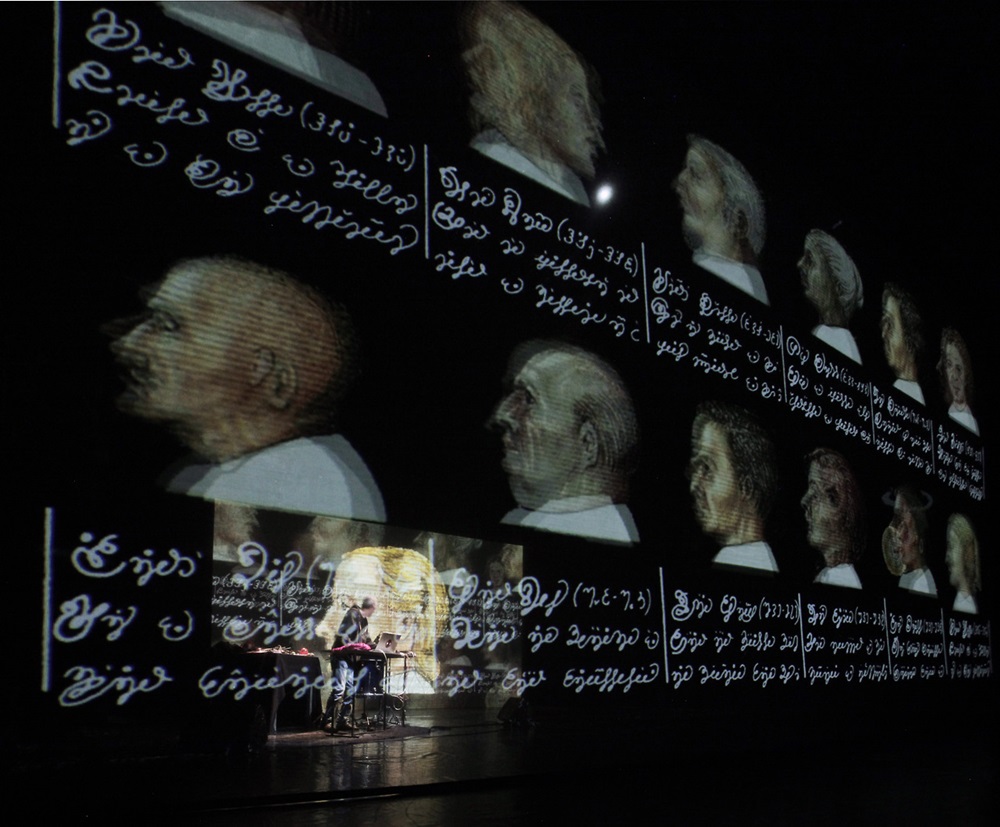 The show, conceived and created by Karmachina with original music by Michele Rabbia, is designed as an immersive journey into the creative imagination of the Code. The mysterious writing and over a thousand illustrations of this encyclopedia come to life in the large dimensions of the stage within a scenario designed to distribute the projections on multiple levels, where the illustrations of the Codex come alive, fluctuate and combine on the notes of the percussion and Rabbia’s live electronics.
The show, conceived and created by Karmachina with original music by Michele Rabbia, is designed as an immersive journey into the creative imagination of the Code. The mysterious writing and over a thousand illustrations of this encyclopedia come to life in the large dimensions of the stage within a scenario designed to distribute the projections on multiple levels, where the illustrations of the Codex come alive, fluctuate and combine on the notes of the percussion and Rabbia’s live electronics.
The narrative structure of K-CODEX, inspired by the thematic organization typical of encyclopedias, is intended to be a tribute to the inexhaustible resources of human imagination. Each chapter of the show is dedicated to a different aspect of the universe imagined by Serafini: the plant and animal world, the world of machines, of man, understood as an animal species and as a social animal, the world of habits and customs, that of Urban planning and living are individually dissected and explored, re-proposed as independent portions of an ecosystem that lives by its own rules. This rigorous organization, scientific and purely fantastic, underlines how the creative power of the Codex Seraphinianus also derives from its author’s ability to explore the entire knowledge of an improbable universe coherently and plausibly.

Jain Syriac Babu is a Kerala-born, Italy-based theatre artist and art enthusiast.

